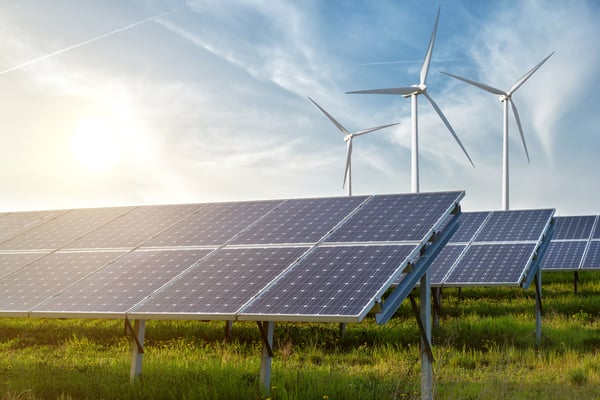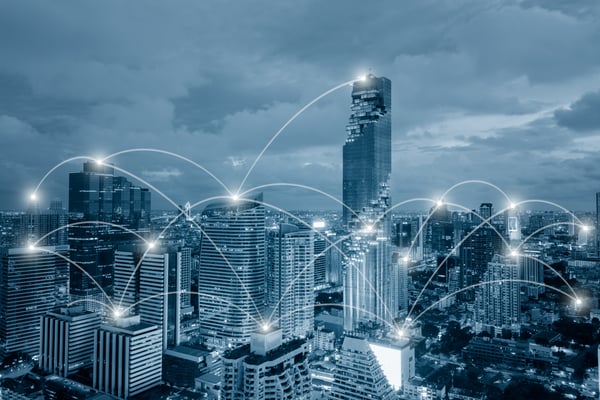How Technology Can Help Building Owners Meet the NYC Green New Deal

The NYC Green New Deal introduced a 40% emissions reduction target for the building sector, to be met by 2030. Reaching this goal with only minor upgrades is unfeasible, which means that deep building retrofits will be necessary. The law covers all buildings above 25,000 sq.ft., and the bar is set higher for public buildings, requiring an emissions cut of 50%.
The recent legislation brings a significant environmental benefit, but the local government is aware that it could cost billions for the building sector. The requirements are less demanding for properties with limited cash availability, such as rent-regulated apartment buildings.
Reducing building emissions by 40% may seem a daunting task with the technologies currently available. However, since 2030 is still more than one decade away, there is time to develop and implement innovative solutions. Consider the drastic cost reductions achieved in the solar power industry: the technology was not viable due to its cost less than two decades ago, but is now among the fastest growing energy sources in the world.
Improve Your Energy Efficiency and Reduce Building Emissions
Combining Building Electrification and Renewable Energy
One possible approach to decarbonize the building sector is replacing combustion appliances with electrical equipment. For example, a geothermal heat pump can assume the functions of a boiler without producing emissions locally. However, this approach requires a larger share of renewable generation to be feasible. Emissions are simply being relocated if the power grid continues to rely on fossil fuels.

Energy storage can enable a higher level of building electrification, allowing an increased share of solar and wind power. Currently, the variable nature of these energy sources limits their application. However, the widespread adoption of energy storage could balance renewable generation with building demand:
- If there is surplus generation from solar arrays or wind turbines, batteries and other energy storage systems can be programmed to absorb it.
- On the other hand, energy storage systems can be configured to deliver power when demand is high. This removes load from the power grid, reducing its operating cost.
This approach works in theory, but the cost can be very high in an actual project. Both heat pumps and energy storage systems are expensive technologies, but innovation could drive down their costs, just like in the case of solar power.
Bringing Artificial Intelligence to Buildings

Artificial intelligence is another promising technology that can reduce the environmental impact of buildings. Energy waste can be attributed in great part to inefficient equipment and thermal envelopes. However, plenty of energy is also wasted due to poor usage habits and building systems that are not configured correctly. The following are two common examples:
- Many buildings have lighting fixtures that are never deactivated, even when there is no occupancy. This is a common issue in hotels and multifamily buildings.
- Air conditioning systems are often set at the lowest temperature and the highest fan speed during summer. Excessive cooling is detrimental for health and comfort.
- A similar practice that wastes energy during winter is setting heating systems at the highest temperature available.
- Hot water systems with storage tanks are often left running permanently. There are significant standby losses just to keep the water in the tank warm.
Lighting systems can be easily controlled with occupancy sensors. Space heating, air conditioning and water heating can be automated by a Building Management System (BMS), since their control requirements are more complex.
The greatest benefits from AI in the building sector can be achieved if the operation of multiple buildings is coordinated to reduce energy consumption. For example, reducing the demand from one building by 20 kilowatts does not have a major impact on the grid. However, if the same result is achieved in 5,000 buildings, 100 megawatts of load are taken off the grid.
AI can also interact with renewable generation and energy storage systems to maximize their value. Virtual power plants are a very promising concept: a control system manages small installations across multiple buildings, aggregating their capacity to operate as a power plant. A project of this type is being developed in Australia, combining the capacity of 50,000 residential solar power systems with energy storage. Each installation has a rated power of 5 kW and a storage capacity of 13 kWh, adding up 250 MW and 650,000 kWh.
Conclusion
The NYC Green New Deal seems like a heavy financial burden for the real estate sector, but the long-term deadline must also be considered. Promising technologies for buildings could reach the market at a competitive cost, allowing reduced emissions through financially viable upgrades. Building owners can achieve better results by gradually improving their energy efficiency year by year, instead of attempting a large building retrofit when the deadline is close.

Michael Tobias
Michael Tobias, the Founding Principal of NY Engineers, currently leads a team of 150+ MEP/FP engineers and has led over 4,000 projects in the US
Join 15,000+ Fellow Architects and Contractors
Get expert engineering tips straight to your inbox. Subscribe to the NY Engineers Blog below.

